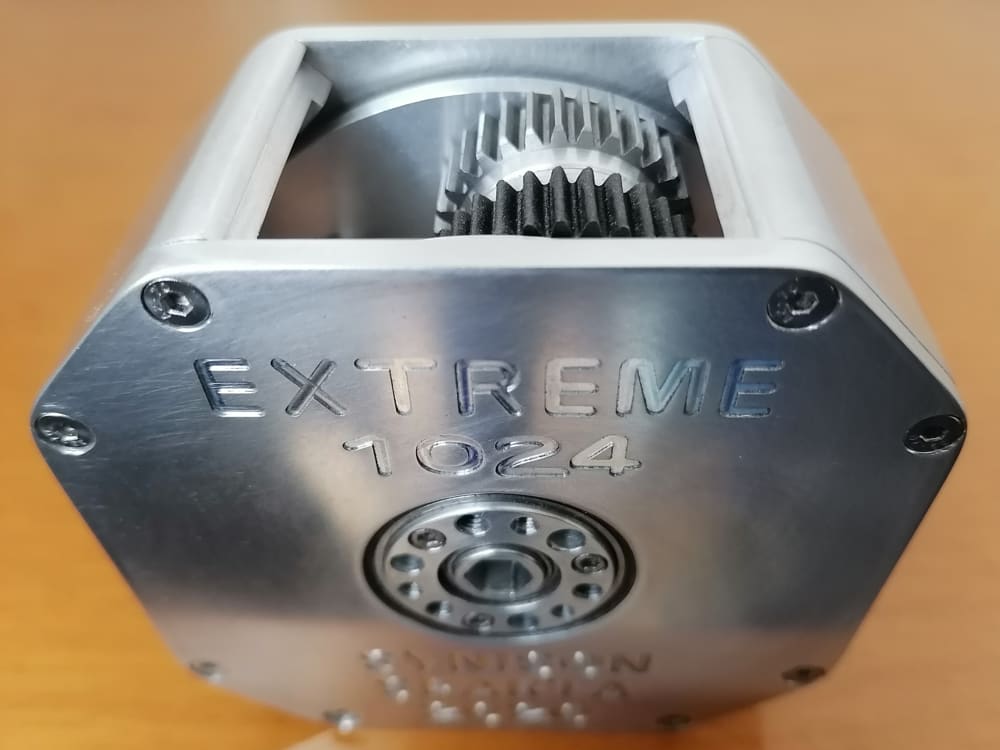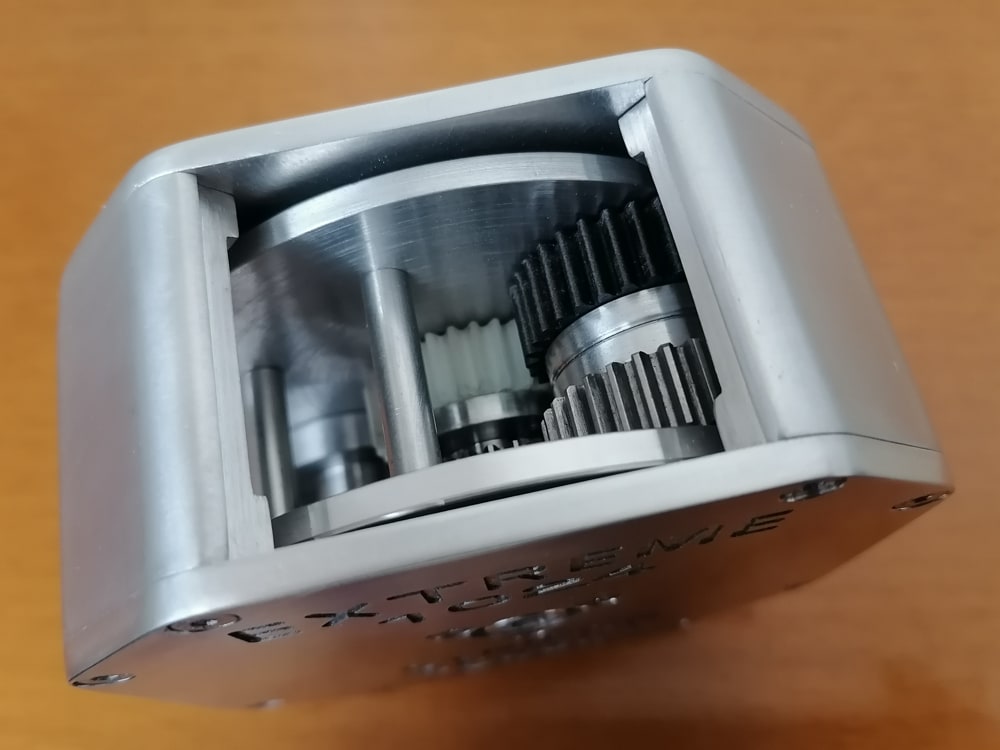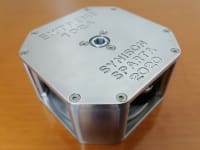The EXtreme Transmission Ratio Efficient MEchanism (EX.T.R.E.ME.) is a simple planetary mechanism with a pair of standard module gears and a pair of gears with involute profile but non-standard module.
In this way, having only ONE moving part between its input and its output (only THREE moving parts, in total) this mechanism easily achieves extremely high transmission ratios for speed reducing (1,000,000:1, for example) and a transmission ratio of 1:100 for speed increasing.
However, the great challenge is the achievement of a ratio of 1:1,024 for speed increasing; the design and construction of such a fully operational prototype is under development.
It is obvious that this mechanism has plenty of applications, the most significant of which are:
- for the movement of the arm of a robot, being an electro-reducer with only THREE moving parts, where the stator is the frame of the mechanism and the rotor is its carrier, and
- for the increasing of the low speed of the propeller of a wind turbine, up to a speed suitable for an electric generator, using a very high transmission ratio, and drastically decreasing in this way the cost of the electric generator, while increasing the overall efficiency of the wind turbine, at the same time.
More for this mechanism at:
https://patentscope.wipo.int/search/en/detail.jsf?docId=WO2021165707
and at:
https://engine.green/extreme.htm
and more for its applications, in general, at:
https://engine.green
The Differential Winch, being analogical, is the only purely mechanical mechanism that can achieve almost infinite transmission ratio in both directions: for speed reducing and speed increasing.
However, it has only ONE drawback: if it is based on friction then it has a limitation in output torque magnitude, and if not then either it has a limitation in output stroke, angular or linear, or it needs a rope or an untoothed belt with correspondingly almost infinite length. The epic effort in the 19th century to solve this problem, by the digitalization of the Differential Winch, resulted in the Differential Pulley, achieving, however, a rather low value as its maximum transmission ratio.
The present Invention achieves a successful digitalization of this analogical Differential Winch, resulting in the simplest possible and the most efficient possible geared transmission mechanism with an extreme transmission ratio, named "EXTREME."
The main idea is the hybridization of the Differential Winch with the Planetary Mechanism, keeping the concept of the small difference between the diameters of the two working pulleys of the Differential Winch.
From another perspective, the present Invention is the child of the fertile marriage between the Differential Winch and the Three Successive Integers Conjecture:
https://engine.green/extreme.htm#CONJECTURE
Like this entry?
-
About the Entrant
- Name:Panos Zaraphonitis
- Type of entry:individual
- Software used for this entry:Pro/Engineer, Pro/Mechanica, SI/OligoLithic, SI/DoricLogic
- Patent status:pending








